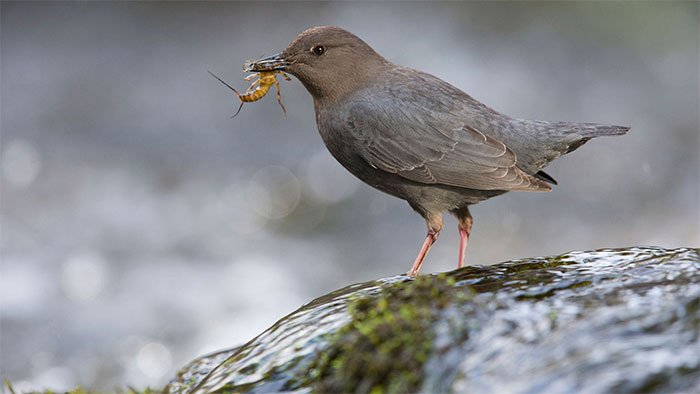The wings of this bird species have a unique mechanism that allows them to fly in the air while also functioning like paddles underwater, enabling them to dive deeply at incredible speeds.
The White-throated Dipper (Sturnus cinclus) belongs to the sparrow family but possesses a unique mechanism that allows it to hold its breath for extended periods underwater, making it adept at moving and foraging in this environment.
The Dipper measures about 18 cm in length, has a short tail, and is distributed across Europe, the Middle East, Central Asia, and the Indian subcontinent. Its distinguishing features include a white throat and upper chest, surrounded by black feathers on its belly and sides.
The wings of this bird have a unique mechanism, allowing it to fly through the air while also using them as paddles underwater, enabling the bird to dive deeply at remarkable speeds. Although its legs lack the webbing found in diving birds, this structure helps the Dipper grip the riverbed when it lands, allowing it to start foraging while maintaining balance.

The Dipper’s favorite food is Gammarus – a small crustacean.
The Dipper also has dense plumage designed to be waterproof. Its eyes have well-developed muscles to enhance vision underwater. Additionally, it possesses nasal flaps to prevent water from entering its nostrils. Its blood has a high hemoglobin concentration, allowing for greater oxygen storage compared to terrestrial predatory birds, enabling it to dive underwater for at least 30 seconds.
The Dipper’s favorite food is Gammarus – a small crustacean that resembles shrimp but has legs. They also consume various aquatic invertebrates, including caddis larvae and other aquatic mollusks. In some cases, Dippers have been observed hunting fish and small amphibians.
Unlike some larger species of diving birds, Dippers do not become clumsy when perching on land or foraging on dry ground. However, they seem to have adapted to a life of foraging underwater to avoid predation by terrestrial birds of prey. This is evident as they often nest on islands, where common predators have difficulty accessing. Nonetheless, their eggs and chicks are frequently preyed upon by gulls, crows, raccoons, skunks, foxes, and large predatory fish.


















































